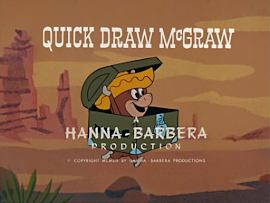
Today the future, it seems, is a negative, hopeless place of doom. In fiction, even superheroes aren’t very heroic. “Poor me,” they wail, in filmed or drawn frames of dark greys and blacks.
But in the days of the Jetsons, the world looked forward to the future. The TV series was really a culmination and digestion of a variety of sources over the 1930s, ‘40s and ‘50s which peered happily into a buoyant Universe of Tomorrow, where life would be relaxing and perfect, thanks to science and technology.
Of course, nothing quite worked according to plan. After all, The Jetsons was a comedy show, so some mechanical slapstick came in handy. And I like the idea that somewhere in the future, there’s a dog named Tralfaz that is too adept at pronouncing the letter ‘r.’
You’ve likely read in this blog and elsewhere about how some of the things foreshadowed on the cartoon series (or something similar) have become reality. Hanna-Barbera found that to be a problem when the series was in production. Here’s Joe Barbera talking about it in the October 7, 1962 edition of the Arizona Daily Star out of Tucson.
Barbera’s comment about the series being talked about as early as 1960 perhaps means a future family was one of the ideas that came up when the studio was batting around concept that eventually became The Flintstones.
Hanna, Barbera Meet Space Age Problems
New Series Depicts Future Family Life
By HAL MARSHALL
Star TV Editor
HOLLYWOOD, Oct. 6—It's tough keeping 100 years ahead of the space age!
Sound incongruous? Not to Bill Hanna and Joe Barbera, producers of the new TV series, “The Jetsons,” which is carried Sunday by KGUN-TV (Channel 9).
The animated cartoon series battered the opposition in the ratings on its first outing. In addition, it is taxing the imagination of Hanna, Barbera & Co., creators of “Flintstones,” "Yogi Bear” et al.
“The Jetsons” depicts family life in the future—100 years or so hence. There's only one hitch, the present keeps catching up with the future. The idea men come up with a new design for space travel or an imaginative home appliance device for the 21st Century home. They get set to use it in the show and then discover there is something in the works—somewhere in the world—similar.
“Two years ago we started talking about this show,” Barbera explains, “and after six months of planning we found ourselves losing the space race in imagination. We had to scrap a lot of ideas. Speeds we planned on using were already being surpassed (in the 20th Century).”
Barbera went on to list other similarities such as designs at the Seattle World's Fair that approximate a few building designs in “The Jetsons.” A space capsule car showroom is similar to one General Motors has on the has on the drawing boards, Barbera learned recently.
All this has convinced Barbera that “everything we think of will be done.”
The Jetson family consists of a father, mother, teenage daughter and son, eight years old. In case you haven't seen the show, the 21st Century offers an unlimited opportunity for visual sight gags. On cookouts, the family goes to the moon. An afternoon field trip for a high school class might include a jaunt to Europe. The family can spend a week end at Las Venus at the Flamoongo Hotel where all the rooms have built-in dealers and slot machine robots that follow the guests.
The Jetsons have a seeing eye vacuum cleaner that seeks out dust and devours it. However, when Jane Jetson isn't looking the electronic cleaner is apt to sweep the dirt under the rug. The Foodarackacycle fixes meals instantly when fed a punch card designating the type of food desired. George Jetson has a mother-in-law-car with a separate capsule in the rear for his wife's mother. If she does too much back seat driving, he can eject her.
The show also spoofs present-day conditions. In “The Jetsons,” football is played by robots—an obvious take off on today's super athletes in the pro league.
“Although we'll be loaded with gags, these are basically warm stories about a family,” Barbera added. But he's still amazed about how fast the present catches up with "The Jetsons” of the future.
"We have a story about the grandfather who retires at 110 and wants to keep busy. The other day, I picked up a newspaper and read where someone is predicting it won't be long before the retirement age is 100 years.”


















































